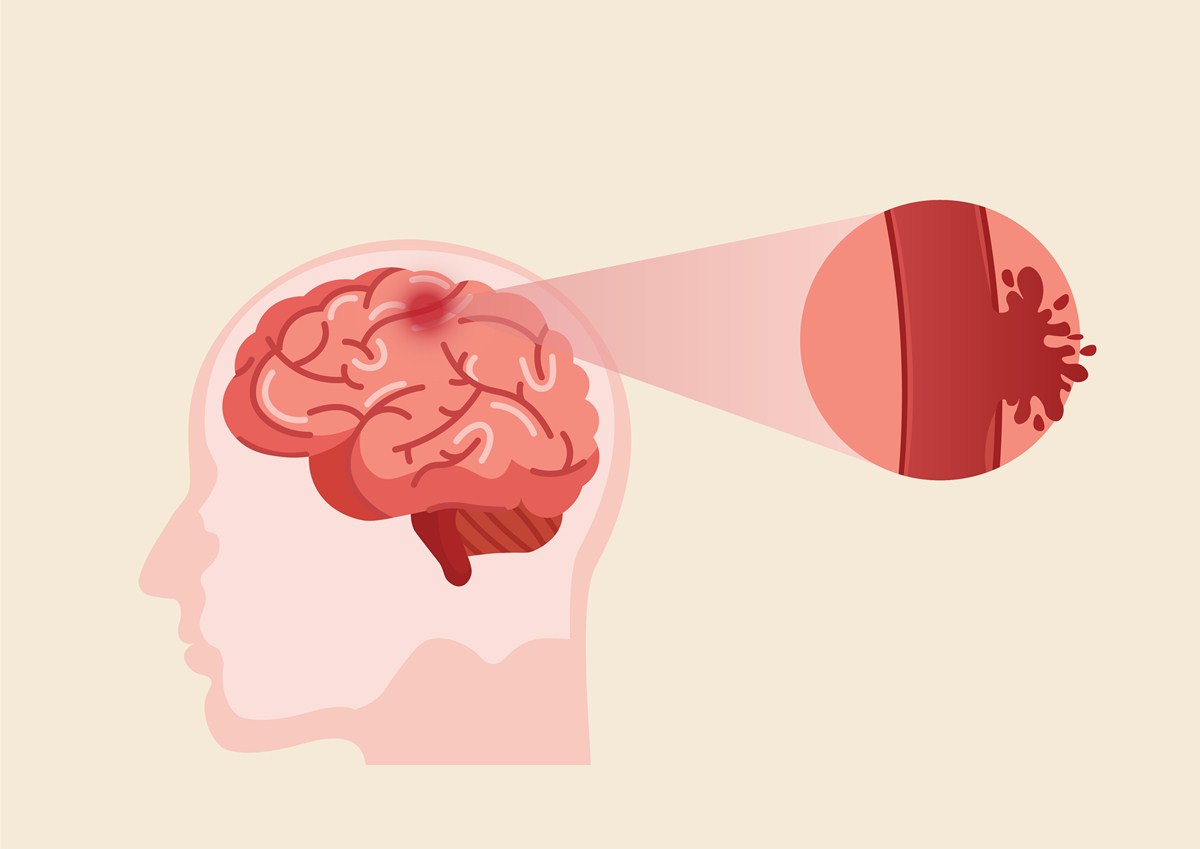A brain hemorrhage, or a bleed in the brain, can occur for a variety of reasons. Often, brain hemorrhage is the result of a stroke and develops as a consequence of rupture of certain arteries of the brain. Accidents, a brain tumor, and certain underlying chronic conditions can also lead to a brain hemorrhage.
Severe and uncontrollable brain hemorrhage in spite of treatment may cause a lethal outcome. This particularly refers to brain hemorrhage in certain parts of the brain that simply cannot be operated on.

Brain Hemorrhage: An Overview
A brain hemorrhage may manifest with a variety of symptoms which depend on the location of the bleeding, its severity, and the amount of damage the brain tissue sustained during the bleeding. Symptoms and signs of brain hemorrhage can develop suddenly or gradually. They usually become worse over time, particularly if the person is suffering from severe bleeding.
Some of the most common symptoms and signs of brain hemorrhage include:
- A sudden intensive headache
- Seizures
- Weakness, tingling sensations, or numbness in the arm and/or leg, typically on only one side
- Nausea and vomiting
- Changes in vision
- Difficulty speaking and swallowing, including confusion, not making any sense, and having trouble understanding others' speech
- Loss of fine motor skills, coordination and balance.
- In some cases patients lose consciousness and end up in a coma.
There are different causes of brain hemorrhage and several risk factors that contribute to the condition. In many cases bleeding occurs due to head trauma, untreated hypertension, brain aneurysm and blood vessel abnormalities. Bleeding may also develop due to amyloid angiopathy, coagulopathies, liver disease and brain tumors.
Brain Hemorrhage: Recovery
Recovery after brain hemorrhage depends on several factors such as the location of the bleeding, cause, and the extent of bleeding. Unfortunately, not all brain hemorrhage patients survive, and some of them develop permanent neurological complications.
The treatment of brain hemorrhage may be conservative or surgical. The goal of the treatment is to stop the bleeding, reduce the brain swelling and prevent bleeding recurrence.
Surgical treatment for brain hemorrhage is performed to remove the blood clot, remove brain tumors, alleviate swelling, stop hemorrhage and prevent bleeding recurrence. Craniotomy and stereotactic aspiration are two surgical procedures performed in case of brain hemorrhage.
Still, even though some patients may need a surgery the very location of the bleeding may make the surgery impossible. In such cases, surgery would only cause additional damage to certain parts of the brain without any improvement of symptoms and signs caused by bleeding.
Recovery after a very mild brain bleeding may not take long. However, patients with moderate and severe brain bleeding, particularly if they have undergone surgery, need more time to recover.
The location of bleeding and the amount of brain tissue affected by bleeding are main factors that determine whether a person will completely recover or suffer from certain complications. Some patients fully recover. On the other hand, some people have to face permanent loss of certain brain functions.
Patients with neurological effects after a brain hemorrhage very much benefit from physical therapy to restore physical function. Speech therapy is required for many people who need to learn to speak all over again after their brain bleed, and occupational therapy can help brain hemorrhage patients figure out how to live independently again, as therapist and patient work out new and easier ways of completing daily tasks.
Over the course of many months of hard work, many people who had a brain hemorrhage can recover their independent functioning. However, many are also left with permanent memory loss and disability, or may suffer from recurring headaches and even seizures.

















Your thoughts on this
Loading...